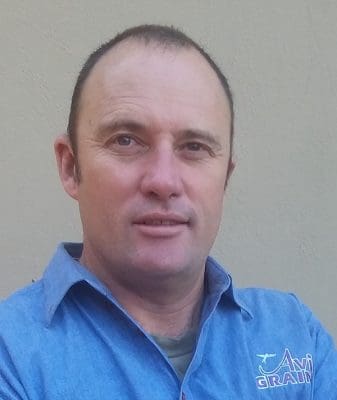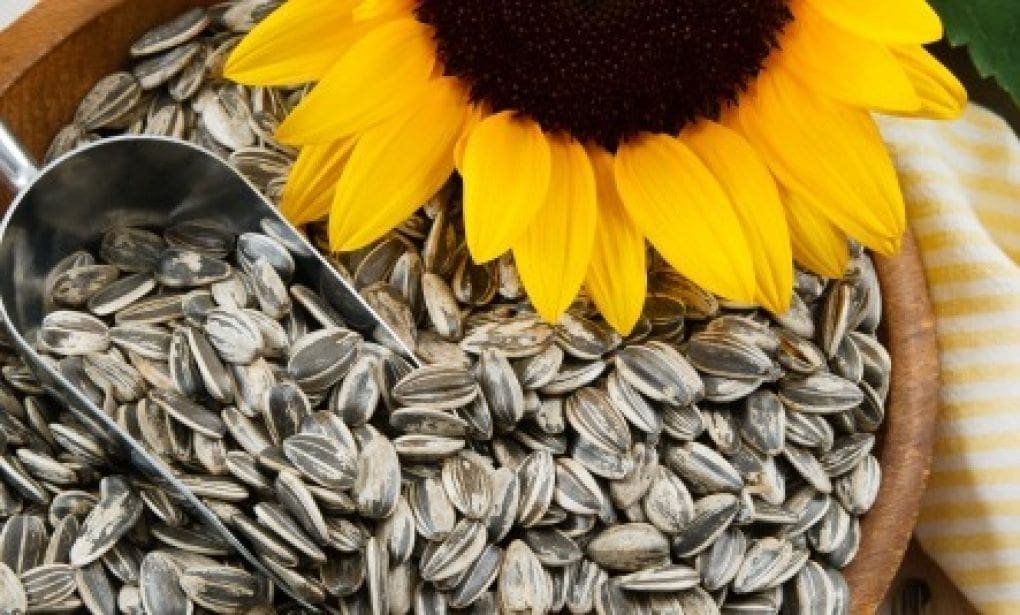An insight into the sunflower market from Dennis Ward, owner of specialist birdseed manufacturer Avigrain which operates two birdseed production facilities on the NSW Central Coast and Queensland’s Darling Downs.
Greys vs Blacks
HISTORICALLY, sunflower growers have demanded a higher price for grey striped birdseed sunflowers compared with the black oilseed types.
The rationale was valid, grey stripe birdseed had to meet a higher quality threshold than black oilseed sunflower.
The birdseed, stockfeed and de-hulling market is chasing a test weight over 40 kilograms/hectare and bright, bold, plump seed. The minimum specifications listed on the Australian Oilseeds Federation document the higher quality threshold demanded. Minimum test weight for oilseed is 32kg/ha vs 38kg/ha for birdseed.
Admix, broken and split, sprouted and damaged seed tolerance is higher in oilseeds compared with birdseed.
How it was – the oilseed crushing market
Oilseed sunflower growers could chase yield without worrying about subjective quality issues, they could set pricing before harvest, were assured a buyer and if they happened to grow a better quality crop, uncontracted growers would likely find a premium in the birdseed, stockfeed or de-hulling market. To manage quality risk, growers of grey striped birdseed need to consider wider row spacing, lower planting rates and starting with higher soil moisture to give the crop the best chance of meeting quality parameters, all of which meant lower yields. As well as quality risk and lower yields, grey stripe growers have to contend with price risk, uncertain cash flow and the need to negotiate with many potential buyers. So a premium was quite rightly demanded for the extra risk, lower yield and marketing effort.

Dennis Ward
Until recent seasons Cargill was the dominant buyer of sunflowers in Australia with their Narrabri processing plant taking the bulk of the Australian sunflower oilseed crop. This plant has moved its focus to cottonseed crushing as the Cargill sunflower crushing business has been unable to compete with imported sunflower and vegetable oil (see today’s separate article on Cargill’s decision to cease crushing operations at Narrabri).
Australia was once able to export sunflower seed but gross margins for alternative crops such as cotton, sorghum, corn and mung beans are now far better options than the prices on offer in the global market for oil and seed.
In 2018 the sunflower market has changed with the disappearance of the oilseed crushing market and growers should review the assumption that greys are worth more than blacks.
How it is – A fragmented domestic stockfeed market
Without export or oilseed crushing demand the sunflower market is back to domestic birdseed and stockfeed which is a small, consistent but highly fragmented market.
For most end-users sunflower is not an important part of their ration. When oilseed crushing dominated sunflower demand, stockfeed buyers would simply outbid Cargill to access the better quality black sunflower and the relatively small demand was supplied with little fuss.
So many sunflower buyers are not used to managing their supply in the same way they would other grains. They just assume it will be there when they need it.
Without the deep market demand of oilseed there are now few buyers offering price indications or forward contracts which makes marketing sunflowers very difficult for the grower.
A fixed demand, price inelastic birdseed and stockfeed market is either oversupplied and prices are set by the weakest seller, or undersupplied and growers’ field increasingly higher bids from buyers until imports kick in to cap prices.
In the past three years spot prices have ranged from $500/t to $1500/t but there is very little trade at these extremes. Poor price transparency and market information makes the sunflower market very volatile which is not good for the future of the industry.
For example, seed suppliers face increasingly volatile demand. On the back of high prices the previous season, growers perceive an opportunity to cash in and demand for planting seed may be high. Seed companies need to plan seed supply ahead several years. So gearing up for another big year and finding no-one wants planting seed the following season as they were unable to sell their crop in an oversupplied year makes the planting seed job difficult to manage.
While all three seed companies stress they are in it for the long haul, we are concerned that seed companies may conclude the Australian sunflower market is not large enough and too volatile to justify further investment in global innovations such as IMI- tolerant varieties, new oil types such as hi-oleic, genetic traits to deal with local issues such as Rutherglen Bug or Tobacco Streak Virus or human consumption types to access the huge Chinese beer n salted sunflower chewing market estimated at over one million tonne per annum.
It is important that alternative crops such as sunflower are kept viable as Australian grain growers need all the options in their toolkit to manage their enterprises in an increasingly volatile climate. For example, along with mung beans, sunflowers can be planted later other summer crop options providing flexibility if there is a late break.
Pricing Sunflowers
Considerations for achieving an adequate gross margin for a sunflower crop.
- Talk to end-users, build relationships and discuss the market asking questions like what is import parity price, how are the seasons looking in key growing areas, how do gross margins on competing crops stack up? With sorghum at $350-400 this year, sunflowers need to be a high number to stack up.
- Consider locking in hectare contracts which provide price certainty at profitable levels
- Never assume last seasons prices will be this seasons prices. Sunflowers are a volatile market and it may take just one grower on a lake to oversupply the Australian market for several years. Last price spike we heard of an enquiry for 10mt of seed to a single grower on Lake Cargelligo looking for a crop to cash in on post flood subsoil moisture. Luckily for other growers that year the excess seed wasn’t available.
- Don’t compare hectare contract pricing with volatile, illiquid spot markets. The only thing we can predict about the sunflower spot market is that it can trend very high to very low depending on production and that not many sales are done at the extremes.
- Make seed quality an agronomic focus so you have a saleable
Greys vs Blacks
The only market for black sunflowers is now the domestic stockfeed, birdseed and de-hulling market. These markets require a quality standard as high as the birdseed market and all the risks associated with grey stripes in the past apply to blacks now.
Avigrain has been saying for some time that black sunflowers should be priced at the same level as grey stripes. This is met with resistance as growers expectations are that there should be a price differential and that we are simply trying to find an excuse to pay less for greys. What we are actually saying is that growers should be getting more money for black sunflowers as they are taking on more risk. This is in contrast to accepted wisdom and market information such as the AgTrends 2017-8 report (see references below).
What about yield?
We surveyed the four growers we know who grew both black and grey sunflowers in 2018.
This is a small sample but the anecdotal evidence is that blacks have no yield advantage over the grey stripe varieties available in Australia.
Results were mixed and yields were the result of typical agronomic factors such as plant available water, previous cropping in paddocks, soil types, disease pressures, seed strike –variety type does not appear to be a significant factor.
What about market risk?
One comment that comes up frequently is that the birdseed market is much smaller than the stockfeed and de-hulling market therefore the crop is more difficult to market and so should attract a premium. We guess the birdseed market is about one-third the size of the stockfeed market so the size comparison is valid. However, there are large volume buyers who will use either blacks or greys depending on the price.
- A significant buyer of sunflowers is the birdseed supermarket trade. Coles and Woolworths contracts stipulate packers can use either blacks or greys so these buyers will swap from grey to black depending purely on price.
- Horsefeed and poultry markets use a tiny percentage of sunflowers in their blends and while they prefer blacks but will happily use grey stripes if blacks are short and will cut back usage and add more sunflower oil when the market tightens up.
- The de-hullers at Paradise Farms in Gunnedah are constantly on the look-out for plump grain and will use grey stripes if they are de-hullable. Nuseed’s Ausistripe14 grows a plump seed which suits this end-use.
While there is significant domestic demand that will use grey striped sunflowers if they are priced at the level of black sunflowers, these markets will never pay a premium.
The only market that absolutely must have grey striped sunflowers is the premium breeder’s quality birdseed market. Given some areas of Australia – namely Victoria and South Australia – are happy to use black sunflower in birdseed rations, this market is very small compared to the wider domestic sunflower market and growers would be well advised not to bank on gaining premiums catering to this market unless grey striped sunflowers are very short in supply.
In summary
Black sunflowers now have a higher quality risk profile than in the past due to the collapse of the crushing market.
Sunflower demand is limited to domestic users who require a minimum quality and will buy either greys or blacks on price. Most years prices will be similar unless there is a very short supply of grey stripe sunflower in which case growers may attract a premium.
That’s our two-bobs worth on sunflower markets. There is plenty to discuss on sunflower agronomy and we’d direct you to one of the seed companies listed below or the sunflower association for more information.
To discuss hectare contracts options or the sunflower market please call Dennis Ward 0402 321 833 or Lachlan Wilde on 0478 023 714.
References
Australian Sunflower Association
http://www.australianoilseeds.com/commodity_groups/australian_sunflower_association
Australian Oilseed Federation Standards
Qld AgTrends – sunflower data p54
The Sunflower Crop in Argentina – FD Castano
https://www.ocl-journal.org/articles/ocl/full_html/2018/01/ocl170040/ocl170040.html
IMI Tolerance
https://weedsmart.org.au/imi-tolerant-crops-use-sparingly-for-best-effect/
Seed companies – available varieties:
Nuseed – Ausistripe 14, Ausigold 62
http://www.nuseed.com/au/products/sunflowers/
Neil Weier, 0429 622 056
S&W Seed Company – SuperSun 66
Will Bazley, Qld and Vic account manager, 0409 770 386
Pacific Seeds – Sunbird 7
Bill Smith, 0428 718 021
Grain Central: Get our free daily cropping news straight to your inbox – Click here




HAVE YOUR SAY